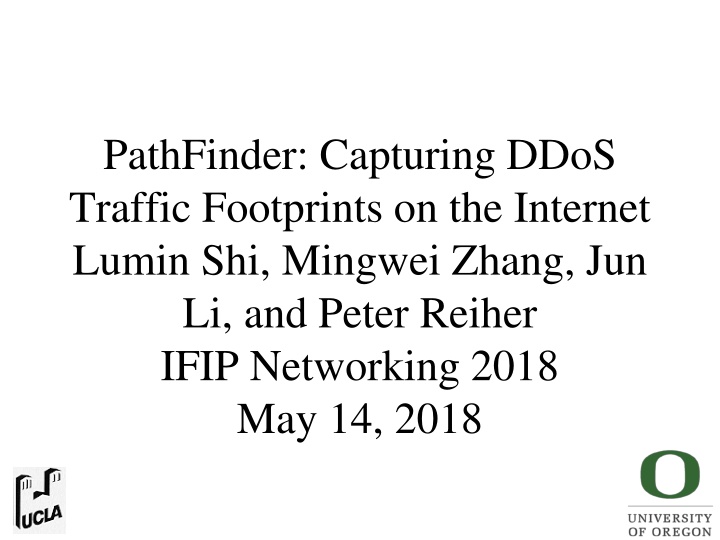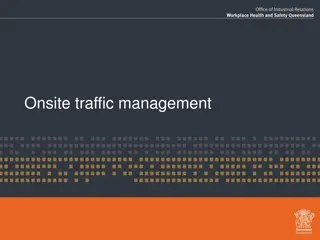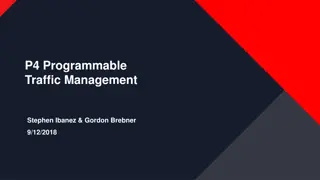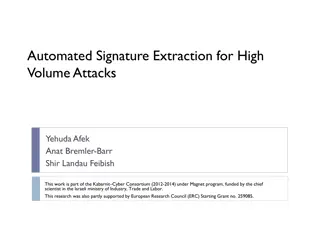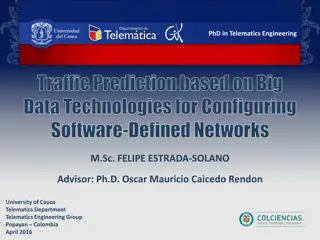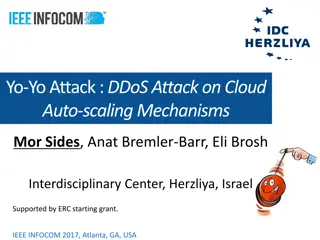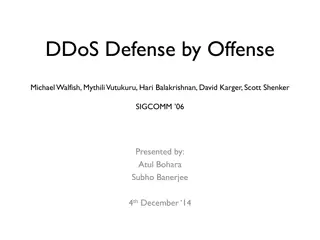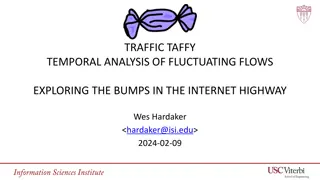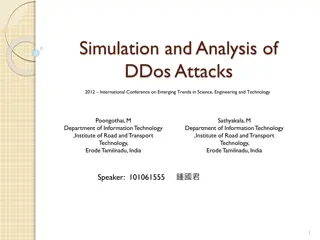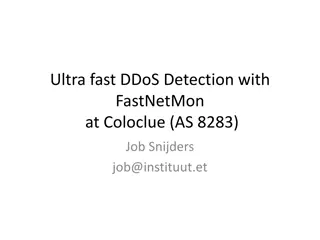Capturing DDoS Traffic Footprints on the Internet
Research on pathfinding techniques for detecting and mitigating Distributed Denial of Service (DDoS) attacks. The study involves analyzing traffic footprints, identifying attack sources, and exploring filtering capabilities to enhance network security against DDoS threats.
Download Presentation

Please find below an Image/Link to download the presentation.
The content on the website is provided AS IS for your information and personal use only. It may not be sold, licensed, or shared on other websites without obtaining consent from the author.If you encounter any issues during the download, it is possible that the publisher has removed the file from their server.
You are allowed to download the files provided on this website for personal or commercial use, subject to the condition that they are used lawfully. All files are the property of their respective owners.
The content on the website is provided AS IS for your information and personal use only. It may not be sold, licensed, or shared on other websites without obtaining consent from the author.
E N D
Presentation Transcript
PathFinder: Capturing DDoS Traffic Footprints on the Internet Lumin Shi, Mingwei Zhang, Jun Li, and Peter Reiher IFIP Networking 2018 May 14, 2018
Many defenses depend on filtering traffic DDoS Attacks But where? AS AS AS AS AS AS AS AS AS AS AS AS AS AS
One Obvious Constraint Filtering big attacks must be more distributed AS AS AS AS AS AS AS AS AS AS Here it s too late AS AS AS AS
Another Obvious Constraint You can t filter traffic if it isn t there! But where is it? AS AS AS AS AS AS AS AS AS AS AS AS AS AS AS Now you have choices AS AS AS AS AS
PathFinder PathFinder points out these choices ASes that sending traffic towards you Telling you where filtering might work Using existing router capabilities Effective in partial deployment With options for costs and levels of detailed information
1. Client asks PathFinder to locate traffic paths 2. PathFinder queries participating ASes 3. They report to Pathfinder on traffic to the target they observe 4. Pathfinder sends aggregate report to the client The Basic Approach
Building AS Reports 1. The AS gets reports from its egress routers about traffic to victim 2. It uses those reports to build a summary report to send to PathFinder Here s where a lot of careful design was required
PathFinder Operation Modes Source-agnostic: I only care about whether you re carrying traffic going to me Source-aware: I also need to know where it s coming from (and maybe how much)
Why Does Mode Matter? Source-agnostic mode is easy We just need to mark if we see traffic to a victim Source-aware is harder We need to keep track of source addresses (at least prefixes) And maybe volume per address/prefix
Considering Our Case I see traffic from this source 1.2.3.4 Source-agnostic:Yes, I see traffic to you DONE! Source-aware: What if there aren t two source addresses? What if there are two million? And I see traffic from this other source 5.6.7.8 1.2.3.4 5.6.7.8 We need a scalable method to record and report that information
The PFTrie Structure A form of prefix tree To store source IP addresses that a participating PathFinder node has seen Compactly, without wasting space for what you haven t While being able to extract the full set you ve seen The position on the tree is the address
A PFTrie in Action We ve already stored address X.111 Now we see address X.101, so we have to store that We don t have a node for the 0 yet, so put it in We also don t have a node for the final 1 yet, so put that in, as well X 1 Now we have a record that we saw X.101 1 0 1 1
Optimizing the PFTrie We ve seen both X.100 and X.101 X So the PFTrie has a node for both Replace them with a single node marked as representing both 1 1 0 Another optimization: only store prefixes, not entire addresses 1 1 0
Why Not Bloom Filters? They would be smaller than PFTries But they re harder to traverse The client needs to know what addresses were seen Bloom filters would need to be queried for each address Or we could infer filtering locations Not helpful with spoofing or asymmetric routing
PathFinder: 90% effective with 500 filters No PathFinder: 90% effective with 3500 filters Some Performance Results Spoofed packets 50% likely to be filtered Asymmetric routing 30% likely Simulated 100,000 bot attack, 25 Mbps per bot Without PathFinder, filters placed by inference PathFinder in source- agnostic mode PathFinder in source- aware mode
Conclusions PathFinder assists DDoS defenses in choosing the most effective locations PathFinder uses existing router features PathFinder is more effective and cheap than previous approaches PathFinder might be useful for other purposes
